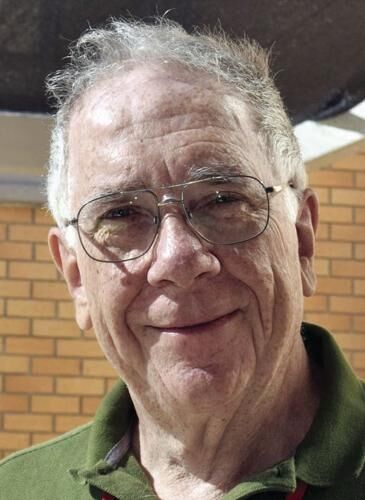I am writing this column surrounded by boxes. My astronomy books are packed, as are many of our belongings. In a few days I will lose Internet access. We are going through that particularly difficult move: “The Downsize”.
Then comes the process of assembling a new version of our home at the new location. With our vast collection of books this will be major. This means there will be an indefinite break in the production of these articles. I wrote the first one in November 1992, and have not missed a week; Jacqui, my wife, carefully proof-read and corrected every one. This will be an odd experience for both of us.
Writing weekly articles to share the fascinating things going on in astronomy and particularly in Canadian astronomy was not my idea. This was an initiative by Tom Landecker, an astronomer at our Observatory. After some years they were taken over by Chris Purton.
He had to drop them when he was posted to Hawaii as part of the Canadian contingent to the James Clerk Maxwell Telescope, and I took over. Chris has a delicate line of humorous writing that I find impossible to copy.
I have to confess that the person who probably learned most in writing the articles is me. Scientists tend to focus more and more on a narrow interest, which in my case is how the Sun makes radio emissions, and how we can use these radio emissions to learn how the Sun works, and what the impact of the SunÎÚŃ»´«Ă˝ behaviour is upon us. To write these articles means paying attention to what is going on in astronomy as a whole. In this regard I have to thank the many people who emailed me questions, and suggested topics.
We are at a particularly exciting point in astronomy at the moment. New instruments are producing a flood of discoveries. An example is the Canadian Hydrogen Intensity Mapping Experiment (CHIME), at our Observatory.
This instrument was intended to map the beginnings of structure in the young universe, but happened also to be the ideal instrument for detecting those strange, millisecond duration “High-speed Radio Bursts”. Thousands of them have now been detected and the arguments go on as to what those events are.
Another is the James Webb Space Telescope. This orbiting telescope is not only producing absolutely stunning imagery, it is causing us to rethink a lot of our fundamental ideas about astronomy.
Then there is CHORD, the Canadian Hydrogen Observatory and Radio-transient Detector (for those high-speed bursts), under construction at our Observatory and the nearly complete Vera Rubin Observatory, under construction in Chile.
This instrument is for surveying large areas of sky. Among other things, if anything changes or moves, it will be spotted. Until recently our telescopes offered only small fields of view, many discoveries have been missed. Then there is the Square Kilometre Array (SKA), the largest radio telescope in the world.
With the ever-improving observations and the increasing amount of new data, we are getting better ideas as to how stars and planets form. We are even spotting planets orbiting other stars and determining whether they have atmospheres, and what gases are present.
In the next few years we will almost certainly know whether any of those planets have life. In addition, it is becoming clear that our ideas about the evolution of the universe need a lot of updating.
Then there are the so-called “dark comets” that are wandering around our Solar System or just passing through. Maybe this is how the young Earth got all its water.
What is the chance of being hit by one today?
There is no question there will be an ongoing flow of things worth writing about and sharing. Maybe when the redecorating is done, bookshelves are up, the boxes unpacked, Internet connected....
--
Mars is getting lost in the sunset glow. Saturn rises in the late evening. Jupiter and Venus lie close together in the predawn sky. Mercury is very low in the dawn glow. The Moon will be New on the 22nd.
Ken Tapping was an astronomer with the National Research CouncilÎÚŃ»´«Ă˝ Dominion Radio Astrophysical Observatory. This column will be on a hiatus until the spring. The Herald greatly appreciates his years of contributions to our newspaper.

